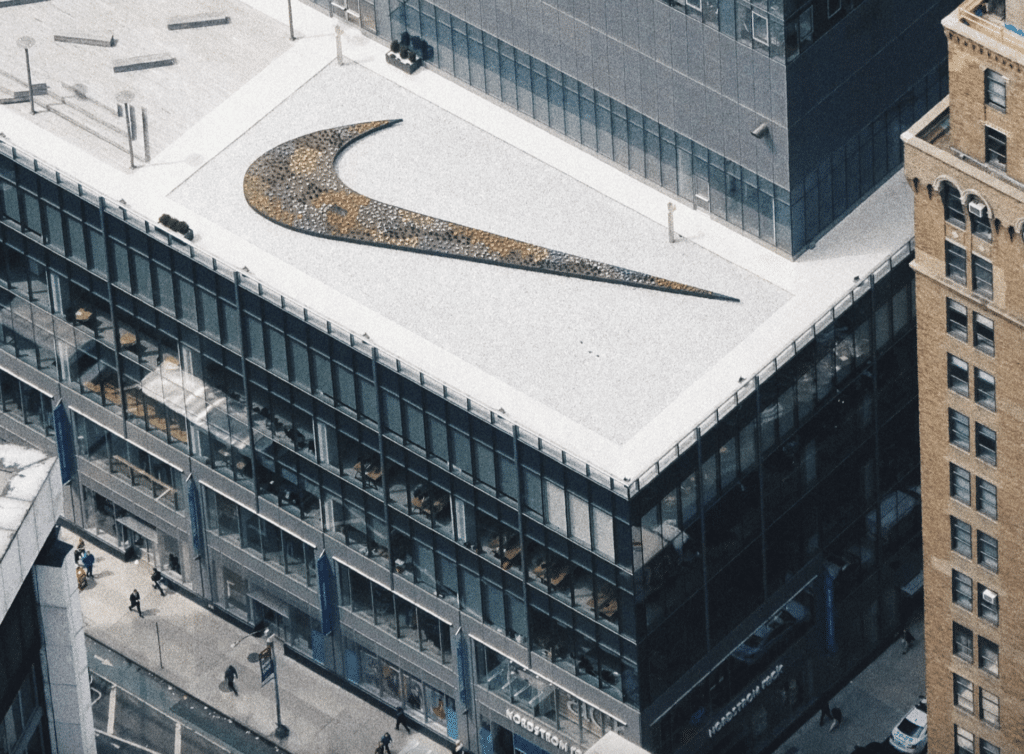Nike and its top executives are embroiled in litigation for allegedly covering up the “ticking timebomb” that was its direct-to-consumer strategy and costing investors “billions” of dollars when the reality of the venture was revealed. According to the first amended consolidated class action complaint that they lodged with a federal court on Oregon this week, a pair of plaintiffs maintain that Nike, its former CEO John Donahoe, its CFO Matthew Friend, Executive Chairman of the Nike’s Board of Directors Mark Parker, Nike’s president of Consumer, Product & Brand Heidi O’Neill, and former Managing Director of Strategic Business Ventures Andrew Campion (collectively, the “defendants”) are on the hook for defrauding Nike shareholders in violation of federal securities laws.
In their nearly-300-page amended complaint, Deka Investment GmbH, a German investment management company, and global investment group Caisse de dépôt et placement du Québec (“the plaintiffs”) allege that in 2020, Nike announced plans to launch a new strategy, called “Consumer Direct Acceleration” (“CDA”). The sportswear titan claimed that this move – which would see it shift away from wholesale partnerships in favor of a direct-to-consumer (“DTC”) business model, with an emphasis on digital sales – would “propel long-term sustainable financial growth for the benefit of NIKE and its shareholders.”
The Downfall of Nike DTC
The problem, according to the Nike shareholder plaintiffs, is that Nike and its leadership failed to take the necessary steps to ensure that the initiative would be successful and then “repeatedly, falsely assured investors that the CDA strategy was achieving its key objectives … and thus, was succeeding in driving the promised sustainable growth” when it was not. Nike and its execs emphasized the strategy’s key components – DTC supply chain, technological capabilities, corporate reorganization, product innovation, brand strength, and channel mix – as thriving, according to the plaintiffs.
However, behind the scenes, it was clear that each core element of the CDA strategy faced “persistent, severe problems,” the complaint states. The plaintiffs allege that Nike struggled with key operational failures, including: (1) an underdeveloped DTC supply chain, which made it difficult to meet consumer demand; (2) insufficient technological capabilities, despite claims that Nike had built a robust digital sales infrastructure; (3) stagnation in product innovation, as Nike reportedly cut its pipeline of new releases and over-relied on legacy products like Air Jordans; and (4) declining consumer interest in mono-brand shopping, forcing Nike to quietly re-engage with wholesale partners despite publicly denying this shift.
The amended complaint claims that Nike executives were aware of these issues and the CDA strategy’s failure to “drive sustainable growth for Nike, as numerous internal red flags (including missed revenue targets discussed internally by the defendants). And yet, they continued to “tout to investors” – in press releasees and earnings calls – that the CDA strategy “was succeeding at propelling the growth [Nike] promised investors.”
When their “fraud” was finally revealed via a series of partial disclosures between December 2023 and October 2024, which showed “the extent of [the] CDA strategy failures and their disastrous impact on the company’s financial performance,” the plaintiffs allege that investors lost billions of dollars. By October 2024, Nike’s stock had plummeted from a Class Period high of $177.51 (Nov. 2021) to $83.10, wiping out billions in shareholder value, the plaintiffs contend.
Alleged Insider Trading, Scienter & Harm
“Knowing all along that the CDA strategy was failing,” the plaintiffs claim that Donahoe, Friend, and Parker “enriched themselves at the expense of Nike investors.” Specifically, the plaintiffs assert that “at the same time as [they] were publicly touting the CDA strategy’s success,” Donahoe, Friend, and Parker engaged in a series of “suspicious” sales of Nike stock while its value was “artificially inflated.” The amended complaint contends that “armed with the knowledge that the CDA strategy was not delivering sustainable growth for Nike,” Donahoe, Friend, and Parker sold a total of 1.95 million shares of Nike Stock, generating proceeds of over $245 million.
The plaintiffs do not set out insider trading-centric causes of action, and instead, they use these allegations to support the scienter prong of their claim under Section 10(b) of the Securities Exchange Act of 1934 andSEC Rule 10b-5. Additionally, to show that the defendants either knew their statements about the success of the CDA endeavor were false or acted with reckless disregard for the truth, the plaintiffs cite internal Nike meetings, reports, and employee testimony showing that executives knew about the problems with the CDA strategy long before they were disclosed.
As for the harm at issue, the plaintiffs state that “in ignorance of the false and misleading nature of the defendants’ statements and omissions and relying directly or indirectly on those statements or upon the integrity of the market price for Nike stock, [they] and other members of the class purchased Nike Stock at artificially inflated prices during the Class Period.” But for the defendants’ alleged fraud, the plaintiffs claim that they would not have purchased NIKE stock at “such artificially inflated prices.”
With the foregoing in mind, the plaintiffs set out claims under Section 10(b) of the Securities Exchange Act of 1934 and SEC Rule 10b-5(b) based on the defendants alleged pattern of making untrue statements of material fact and/or omitting material facts necessary to make their statements not misleading, and Section 20(a) of the Securities Exchange Act of 1934 in furtherance of which the plaintiffs maintain that Nike’s executives had the power to control or influence Nike’s misleading statements and omissions and therefore, are liable.
The case is In Re Nike, Inc. Securities Litigation, 3:24-cv-00974 (D. Or.).














